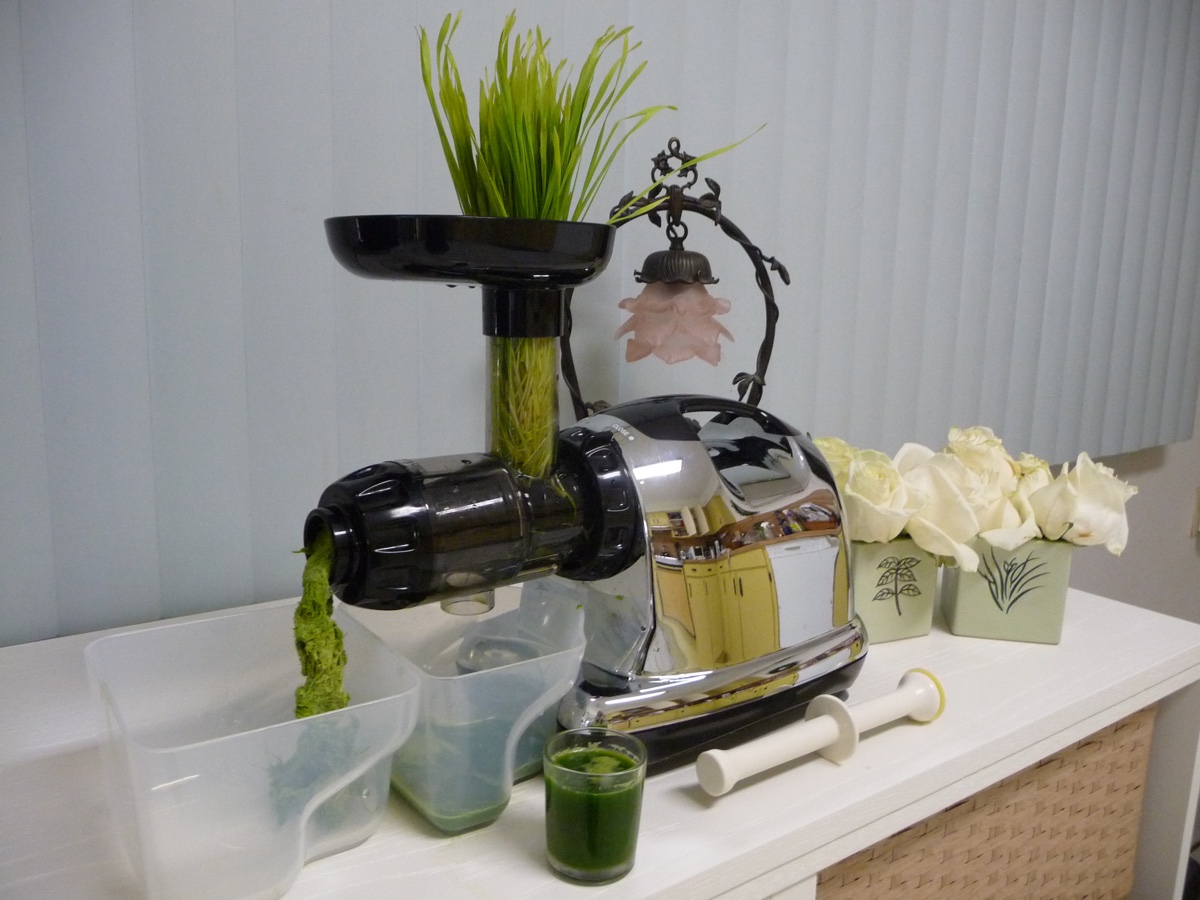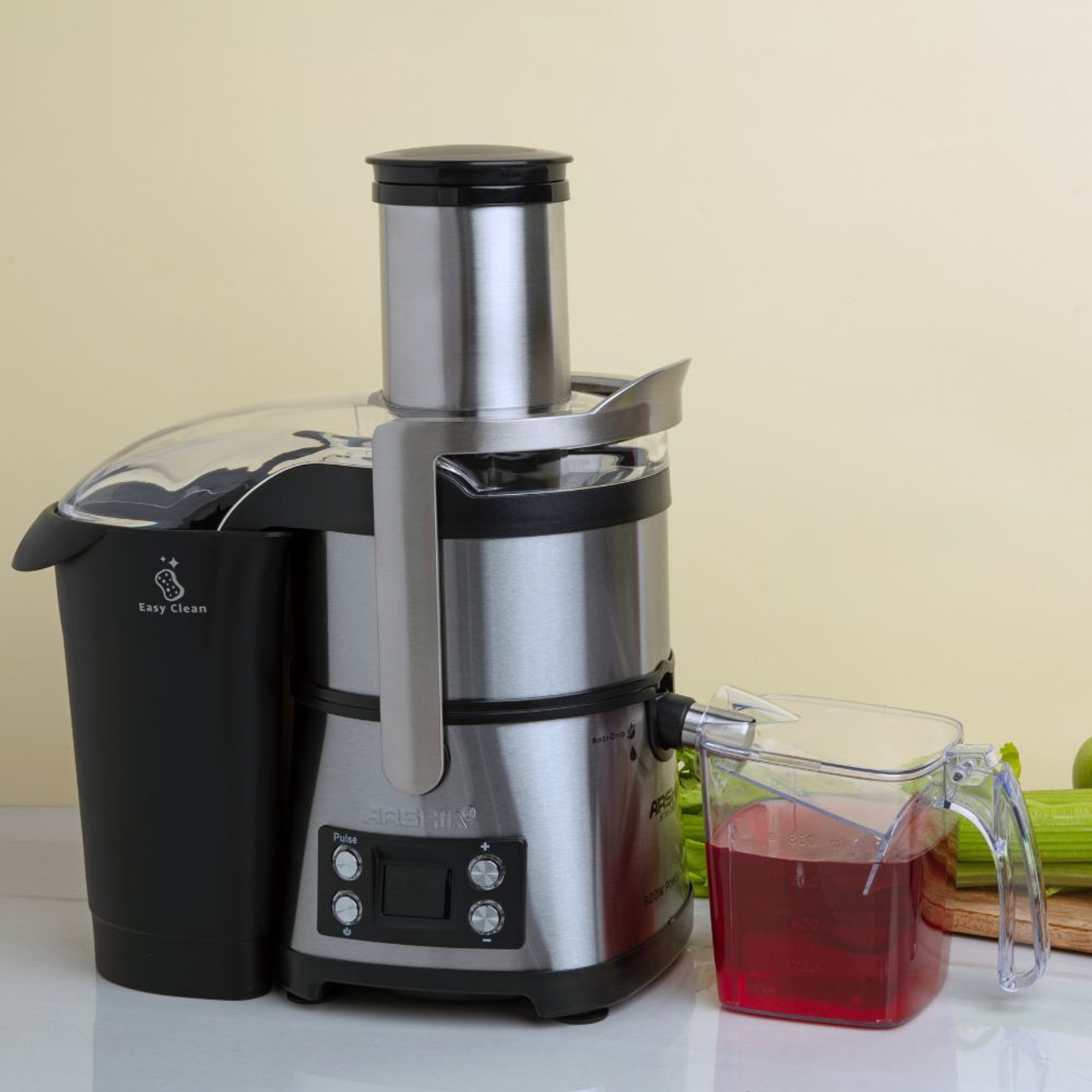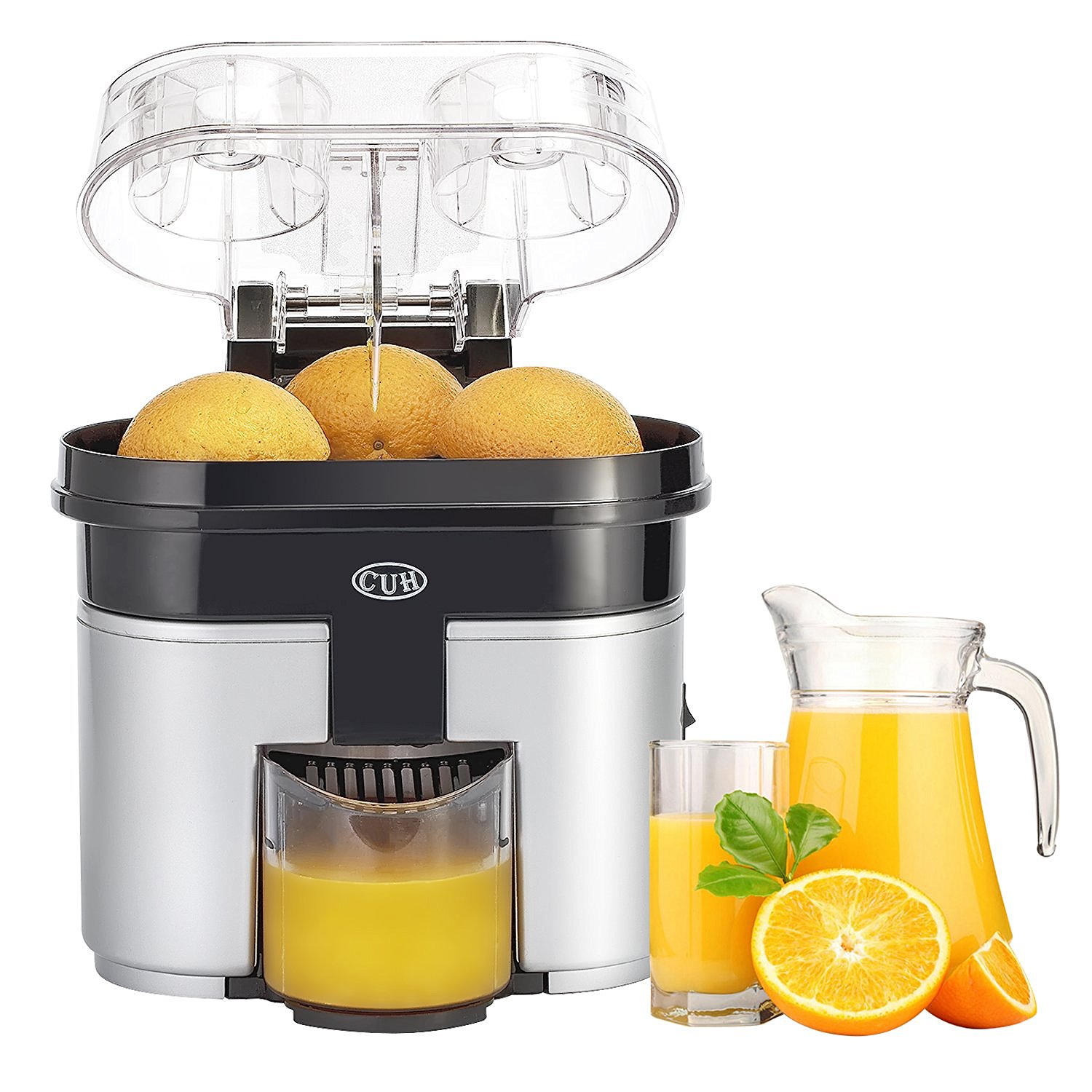

Articles
How To Juice A Lime With A Juicer
Modified: January 5, 2024
Discover the best articles on how to juice a lime with a juicer. Get expert tips and techniques for extracting maximum flavor from your limes.
(Many of the links in this article redirect to a specific reviewed product. Your purchase of these products through affiliate links helps to generate commission for Storables.com, at no extra cost. Learn more)
Introduction
Welcome to the wonderful world of fresh lime juice! If you’ve ever tried to juice a lime by hand, you know it can be a challenging and messy task. However, with the help of a juicer, you can easily extract every last drop of juice from your limes. In this article, we will explore the benefits of using a juicer, how to choose the right limes for juicing, and step-by-step instructions on how to juice a lime using a juicer. We will also provide alternative methods for juicing a lime without a juicer, as well as some helpful tips and tricks. So, get ready to elevate your culinary creations and refresh your beverages with the vibrant and tangy flavor of freshly juiced limes!
Key Takeaways:
- Elevate your culinary creations and refresh your beverages with the vibrant and tangy flavor of freshly juiced limes using a juicer, ensuring efficiency, time-saving, and consistent results.
- Even without a juicer, alternative methods like hand-squeezing, citrus press, or blending can yield delicious lime juice, while helpful tips and tricks enhance your juicing experience for flavorful results.
Read more: How To Juice Pomegranates In A Juicer
The Benefits of Using a Juicer
Using a juicer to extract lime juice offers numerous advantages over traditional manual methods. Here are some of the key benefits:
- Efficiency: Juicers are designed to squeeze every last drop of juice from your limes, ensuring maximum extraction. This means you can enjoy more juice and waste less of the fruit.
- Time-saving: Hand-squeezing limes can be a time-consuming process, especially if you need a large quantity of juice. With a juicer, you can quickly and effortlessly extract juice from multiple limes in a fraction of the time it would take by hand.
- Consistency: Manual juicing can lead to variations in the amount of juice extracted from each lime. A juicer ensures a consistent extraction, resulting in a uniform flavor profile in your recipes or beverages.
- Less mess: Juicers typically come with a juice container that collects the extracted juice, minimizing spills and drips. This makes the juicing process cleaner and more convenient.
- Greater versatility: Juicers are not only useful for limes but can also be used to extract juice from a variety of citrus fruits, such as lemons, oranges, and grapefruits. This makes a juicer a versatile addition to your kitchen equipment.
- Nutritional value: Freshly squeezed lime juice is rich in vitamin C and antioxidants. By using a juicer, you can ensure you’re getting the maximum nutritional benefits from your limes.
Whether you’re using lime juice in cocktails, marinades, dressings, or simply enjoying a refreshing limeade, a juicer will greatly enhance your juicing experience, making it more efficient, convenient, and enjoyable.
Choosing the Right Lime for Juicing
When it comes to juicing limes, selecting the right ones can make a significant difference in the quality and flavor of your juice. Here are some tips for choosing the best limes for juicing:
- Look for ripe limes: Opt for limes that are fully ripe as they tend to yield more juice and have a sweeter taste compared to underripe limes. Ripe limes will have a bright green color and feel slightly soft when gently squeezed.
- Choose larger limes: Larger limes often contain more juice than smaller ones. While the size of the lime doesn’t necessarily affect the flavor, it can impact the amount of juice you can extract.
- Consider organic limes: If possible, choose organic limes to avoid any potential exposure to pesticides or chemicals. Organic limes are generally more flavorful and can offer a cleaner and more natural taste to your juice.
- Check for firmness and weight: When selecting limes, make sure they are firm and heavy for their size. Limes that feel soft or light may be dry and less juicy.
- Avoid limes with blemishes or discoloration: Inspect the limes for any visible bruises, spots, or discoloration. Opt for limes that have smooth and vibrant skins, as they are likely to have a higher juice content.
Remember, the quality of the limes you choose directly affects the taste and freshness of your lime juice. So, take the time to select the best limes available to ensure a delightful juicing experience.
Preparing the Lime for Juicing
Before you start juicing your limes, it’s important to properly prepare them to ensure a smooth and efficient juicing process. Follow these steps to get your limes ready for juicing:
- Wash the limes: Begin by washing the limes under cool running water to remove any dirt or debris from the skin. This step is crucial, especially if you’re using non-organic limes, as it helps to eliminate any residual pesticides or chemicals.
- Roll the limes: To help extract the maximum amount of juice, place the limes on a hard surface and gently roll them back and forth using the palm of your hand. This technique helps to break down the pulp and makes the limes easier to juice.
- Optional: Microwave the limes: If the limes are not particularly ripe or are cold from refrigeration, you can give them a quick zap in the microwave for a few seconds. This slight warmth will make the lime softer and release more juice during the juicing process.
- Cut the ends off the limes: Using a sharp knife, slice off a thin layer from both ends of the lime. This step allows for easy insertion into the juicer and prevents any dirt or contaminants on the ends from being transferred to the juice.
- Cut the limes in half: Slice the limes in half lengthwise using the same knife. This will expose the juicy flesh, making it easier to extract the juice with the juicer.
By properly preparing your limes before juicing, you’ll optimize the juicing process and ensure that you get the most juice out of each lime. With your limes ready to go, it’s time to move on to juicing them with the help of your juicer.
Before juicing a lime with a juicer, roll it on the countertop to break down the fibers and make it easier to extract the juice. This will help you get the most juice out of the lime.
Using the Juicer to Juice the Lime
Now that your limes are prepped and ready, it’s time to start juicing them using your juicer. Follow these steps to effectively extract the juice:
- Set up the juicer: Place your juicer on a stable surface near a power outlet. Make sure all the components of the juicer are assembled correctly and securely.
- Place a container under the spout: Position a glass or bowl under the spout of the juicer to collect the juice as it is extracted.
- Insert the lime halves: Take a lime half and place it cut-side down onto the juicing cone or reamer of the juicer. Press firmly and twist the lime back and forth to extract the juice. Repeat with remaining lime halves.
- Operate the juicer: Depending on the type of juicer you have, you may need to activate the juicing function by flipping a switch or pressing a button. Follow the instructions provided with your specific juicer to ensure safe and effective operation.
- Extract the juice: Once the juicer is activated, the juicing cone or reamer will start rotating, applying pressure to the lime halves. As the juice is released, it will flow down through the spout and into the container below.
- Reposition the lime halves, if necessary: If you notice that some juice remains in the lime halves after the initial extraction, you can reposition them on the juicer to squeeze out any remaining juice.
- Dispose of the leftover pulp and skins: Once you’ve finished juicing all the limes, remove the pulp and skins from the juicer. You can discard them or find alternative uses for them, such as composting or using them in recipes.
By following these steps, you’ll be able to easily and efficiently juice your limes using a juicer. Enjoy the freshly extracted lime juice in your favorite recipes or beverages, knowing that you’ve made the most out of your limes.
Read more: How To Juice Ginger With Juicer
Alternative Methods for Juicing a Lime without a Juicer
If you don’t have access to a juicer, don’t worry! There are several alternative methods you can use to juice a lime without specialized equipment. Here are a few options:
- Hand-squeezing: This is the most common method of juicing a lime without a juicer. Start by rolling the lime on a hard surface to soften it. Cut the lime in half and use a citrus reamer, fork, or your fingers to squeeze the juice out of each half. Be sure to strain out any seeds or pulp.
- Citrus press: If you have a citrus press or a manual lemon/lime squeezer, you can use it to extract the juice from the lime. Place a lime half cut-side down into the press and squeeze the handles together to extract the juice. This method can be more efficient than hand-squeezing and can help you get more juice out of the lime.
- Blender or food processor: If you have a blender or food processor, you can blend the whole lime (remove any seeds) until it becomes a smooth puree. Then, strain the mixture with a fine-mesh sieve or cheesecloth to separate the juice from the pulp. This method is especially useful for recipes that require the zest or pulp of the lime as well.
- Microwave method: If your lime is cold or not very ripe, you can microwave it for a few seconds to soften it and release more juice. After microwaving, cut the lime and use one of the methods mentioned above to extract the juice.
These alternative methods may require a bit more effort and time compared to using a juicer, but they can still give you delicious and fresh lime juice. Choose the method that works best for you based on the tools you have available and your personal preference.
Remember to thoroughly wash your hands, tools, and equipment before juicing to maintain hygiene and prevent any contamination.
Tips and Tricks for Juicing Limes
When it comes to juicing limes, a few tips and tricks can make the process even easier and more efficient. Here are some helpful tips to keep in mind:
- Use room temperature limes: Cold limes straight from the refrigerator can be harder to juice. Allow them to come to room temperature before juicing to make the process smoother.
- Roll the limes: Rolling the limes on a hard surface before juicing helps to break down the pulp and make the juices flow more easily. Apply gentle pressure and roll the lime back and forth using the palm of your hand.
- Invest in a good juicer: If you frequently juice limes or other citrus fruits, consider investing in a high-quality juicer. It will make the juicing process faster and more efficient, saving you time and effort in the long run.
- Strain the juice: To achieve a smoother and pulp-free lime juice, strain it through a fine-mesh sieve or cheesecloth after juicing. This will remove any remaining pulp or seeds, ensuring a clean and smooth texture.
- Freeze lime juice: If you have an excess amount of lime juice, you can freeze it in ice cube trays. Once frozen, transfer the lime juice cubes to a freezer bag for long-term storage. This way, you’ll always have lime juice on hand for future recipes or beverages.
- Squeeze a bit of lime peel: Before juicing a lime, gently press and squeeze the peel. This helps to release the essential oils from the peel and enhance the flavor of the juice.
- Experiment with lime zest: The zest of a lime contains aromatic oils and can add a burst of flavor to your recipes. Consider grating the zest of a lime before juicing and use it in your dishes to add a citrusy kick.
- Clean the juicer immediately: Once you finish juicing, clean your juicer right away to prevent any residue from drying and becoming difficult to remove. Refer to the manufacturer’s instructions for proper cleaning and maintenance.
By following these tips and tricks, you can make your lime juicing experience more efficient, enjoyable, and flavorful. Experiment with different techniques and find the ones that work best for you. Now, it’s time to grab those limes and start juicing!
Conclusion
Juicing limes can be a delightful and rewarding experience, allowing you to enjoy the vibrant flavors and nutritional benefits of fresh lime juice. Whether you have a juicer or prefer alternative methods, juicing limes opens up a world of possibilities in your culinary endeavors.
We explored the benefits of using a juicer, including increased efficiency, time-saving, and consistent results. Choosing the right limes is essential for juicing success, considering factors such as ripeness, size, and organic options. Preparing the limes by washing and rolling them ensures optimal juicing results, while using a juicer simplifies and streamlines the process.
If you don’t have a juicer, fear not! Alternative methods such as hand-squeezing, using a citrus press, or even blending can still yield delicious lime juice. And don’t forget to explore the various tips and tricks we provided, such as using room temperature limes, rolling the limes, and freezing the juice for future use.
Remember, the key to successful lime juicing lies in selecting fresh, ripe limes and employing the right techniques. The tangy and refreshing flavor of freshly squeezed lime juice can elevate your cocktails, marinades, dressings, and even your everyday beverages. With a little practice and experimentation, you’ll become a lime juicing pro in no time!
So, whether you’re a seasoned juicer or just starting out, embrace the joy of juicing limes and savor the zesty goodness they bring to your culinary creations. Cheers to the vibrant and tangy world of freshly squeezed lime juice!
Frequently Asked Questions about How To Juice A Lime With A Juicer
Was this page helpful?
At Storables.com, we guarantee accurate and reliable information. Our content, validated by Expert Board Contributors, is crafted following stringent Editorial Policies. We're committed to providing you with well-researched, expert-backed insights for all your informational needs.















0 thoughts on “How To Juice A Lime With A Juicer”